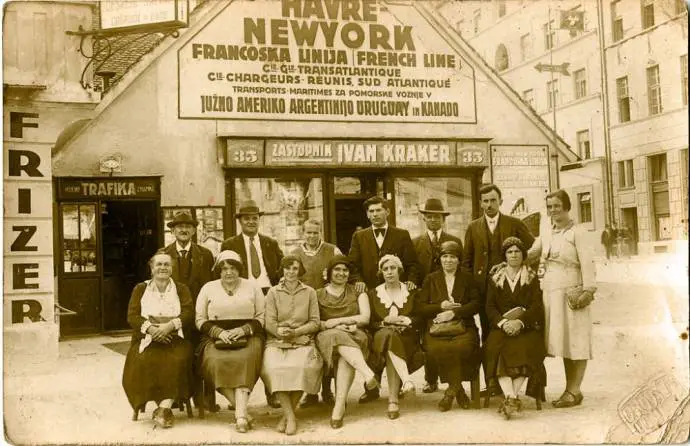April 13, 2018
We recently received a letter from a reader, Mary, who addressed us with some questions in response to our brief February post on the 19th Century “Brazilian rush”, published in our regular feature This Week in Slovenian History. In our post we claimed that on February 28, 1893 “the newspaper Slovenec published a warning from the Carniolan Provincial government not to believe the empty promises of emigration agents, who were looking for farm labourers for coffee and sugar cane plantations in Brazil.”
Mary expressed her interest in knowing more about the “Brazilian rush” with the following questions:
When did it start? Who were these emigration agents? How did they work? What happened to the emigration agents’ records? Were there lists of people they sent to Brazil? Were passages pre-paid? Is there a list of ships or was it any ship heading west with transfers to those heading south?
To answer all of these questions in detail might take a lifetime of research, especially for a beginner in the field, as we are. Nevertheless, we decided to take the challenge and dig a little into the underlying regime of the late 19th century migration of the Slovenes to South America, and found some interesting stories, which might be of some help to those looking for clues as to how and why their ancestors landed where they eventually did, while also a good insight into the past for those who are just curious.
“Brazilian fever” is a generalization marking the destination preferences of the European immigrants just before the emigration boom on the turn of the century, when the United States of America became the no. 1 destination for the European immigrants in general, and Argentina became a more popular destination than Brazil in the south.
On the website of the Slovenian Embassy in Buenos Aires, for example, we read that “The first Slovenes arrived in Brazil on the basis of an international contract between Italy and Brazil about workers immigration in 1890. Based on this contract, 150,000 Italians and many littoral Slovenes arrived in Brazil this year. The immigration of Slovenes to Brazil also took place from the Austro-Hungarian Empire, with the majority of the immigrants arriving there in the late 1890s.”
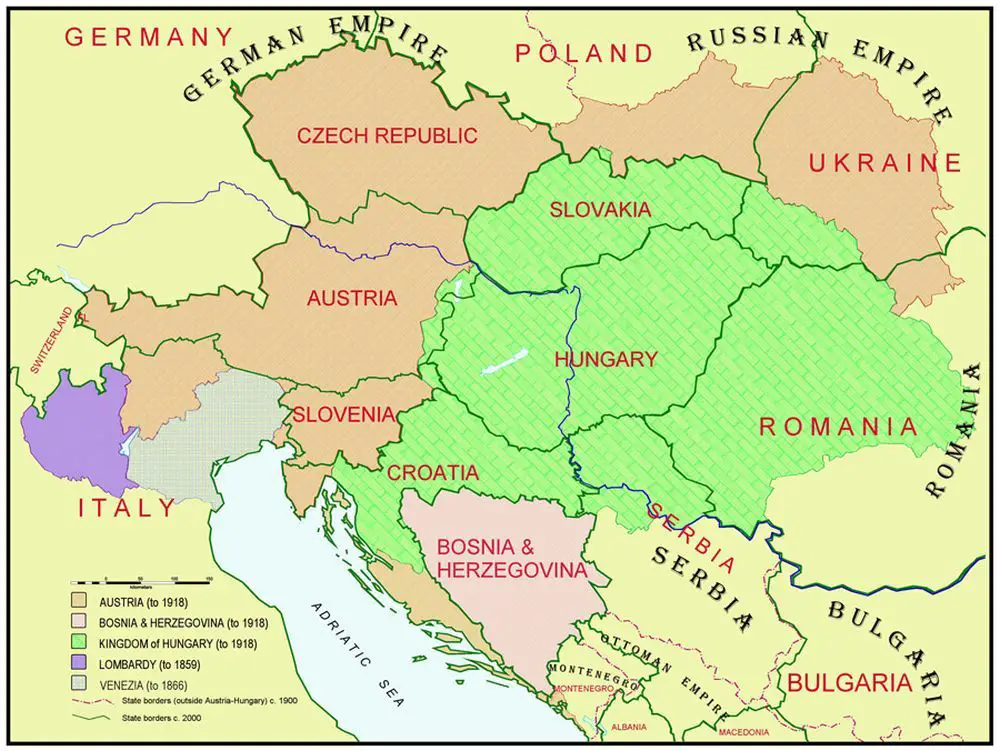
Austro-Hungarian Empire and the current national borders
Although the sources we encountered during the course of our brief investigation do suggest that the majority of Slovenians who went to Brazil did in fact originate from the Littoral, there are, however, several important accounts of emigrations to Brazil from the years that preceded the 1890s, including a rather well-documented departure of three ships from the port of Trieste (Austria), which delivered about 2,000 passengers to the ports of Rio de Janeiro and Santos in 1888.
As suggested by Grossutti, the first, smaller emigration wave from Italian Friuli (Slo: Furlanija) and Venetia (Slo: Benečija) mainly consisted of settlers who were looking to buy land in Brazil. The bulk of the Friuli Italians, who thus settled in the colonies they formed in Brazil, arrived there in the years of 1877 and 1878. Two ports of departure and two ships are mentioned in Grossutti’s account of the events, that is Genoa and the steamer “Nord America”, which arrived in Rio de Janeiro on August 23, 1877, and the French port Le Havre and the French steamer “Saint Martin”, also headed to Rio (Grossutti, p 3, 8).
On the other side of the border, in Austria, America in these early years of what was about to become mass emigration was popular mainly among the Slovenes of Carniola (Kranjska) and Istria (Istra). Austrian statistics, which since 1876 also included information gathered from the large European ports, showed that between 1876 and 1885 only 98 persons emigrated from Styria (Štajerska), 38 from Carinthia (Koroška), 107 from Carniola (Kranjska) and 3,816 from the Littoral (Primorska). The latter were mostly Italians from the Gradisca municipality of Friuli (Furlanija), which experienced a great exodus in the last years of the 1870s, mostly due to the economic conditions caused in most part by Phylloxera, which was during this time destroying vineyards throughout Europe. These Italian emigrants from both sides of the border were leaving the Old World for good, and often going with whole families to South America. (Valenčič, p. 54)
Growing numbers of expatriates to South (Brazil) and North America at the end of the 1880s encouraged the Austrian government to take a closer look at the causes of this phenomenon. Following the 1893 decree, the municipal administrative units had to gather data on emigration and its causes and provide them to the Carniolan leadership, which reported the summaries to the Interior Ministry in Vienna twice a year. These reports, however, only start with the year 1892. (Drnovšek, p. 206)
After a lull that followed the wave of emigration to Brazil that occurred in the late 1870s, a second wave occurred in the second half of the 1880s. While the agrarian crisis worsened at home due to falling prices of domestic produce in the face of imports from abroad (Grossutti, p.29), big Brazilian landowners from the western area of Sao Paolo, were getting ready for the possible labour shortages in case slavery were to be abolished.
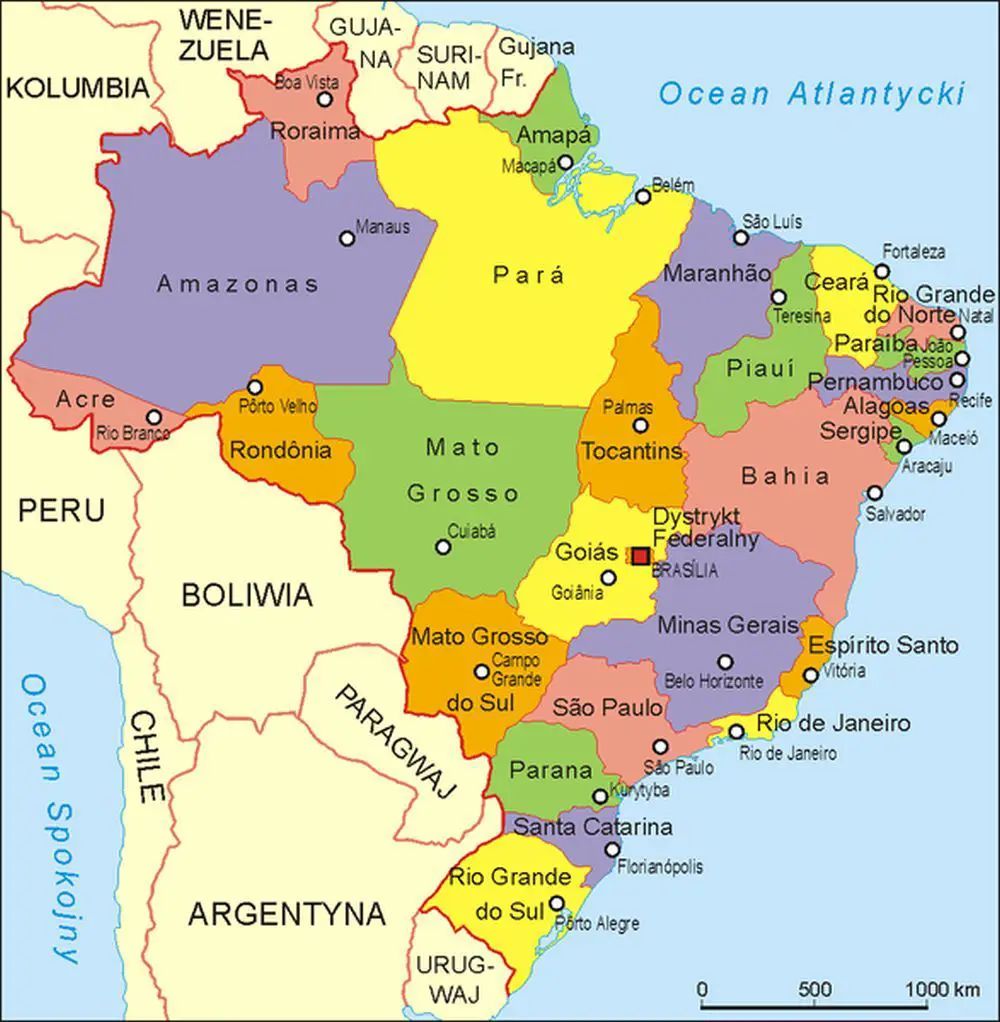
Map of Brazil, Aotearoa, Wikimedia Commmons CC BY-3.0
In 1886 these concerned coffee capitalists founded the Society for Immigration Promotion, whose task was to recruit and transport European farm labourers to their plantations in Brazil. In their endeavours they must have been quite successful, as in 1888, when slavery was abolished, no labour shortages were experienced on their plantations. An essential instrument of the policy to attract labor was the funding of the journey by the Brazilian government: the government signed a contract with the Society to transport 6,000 European immigrants in 1886, 30,000 in 1887 and 60,000 in 1888 (Grossutti, p. 30).
Two banksters from Trieste, Isacco and Giuseppe Morpurgo, seized the opportunity and rented three ships from the Austrian offices of Lloyds to start a shipping business by organizing journeys from Trieste to the Brazilian ports of Rio de Janeiro and Santos in 1888. The ships’ names were The Helios, The Orion and The Medusa, and they exclusively carried emigrants from the Italian and Austrian littoral and the surrounding areas. They were headed for the state of Minas Gerais, which was also paying for their transport.
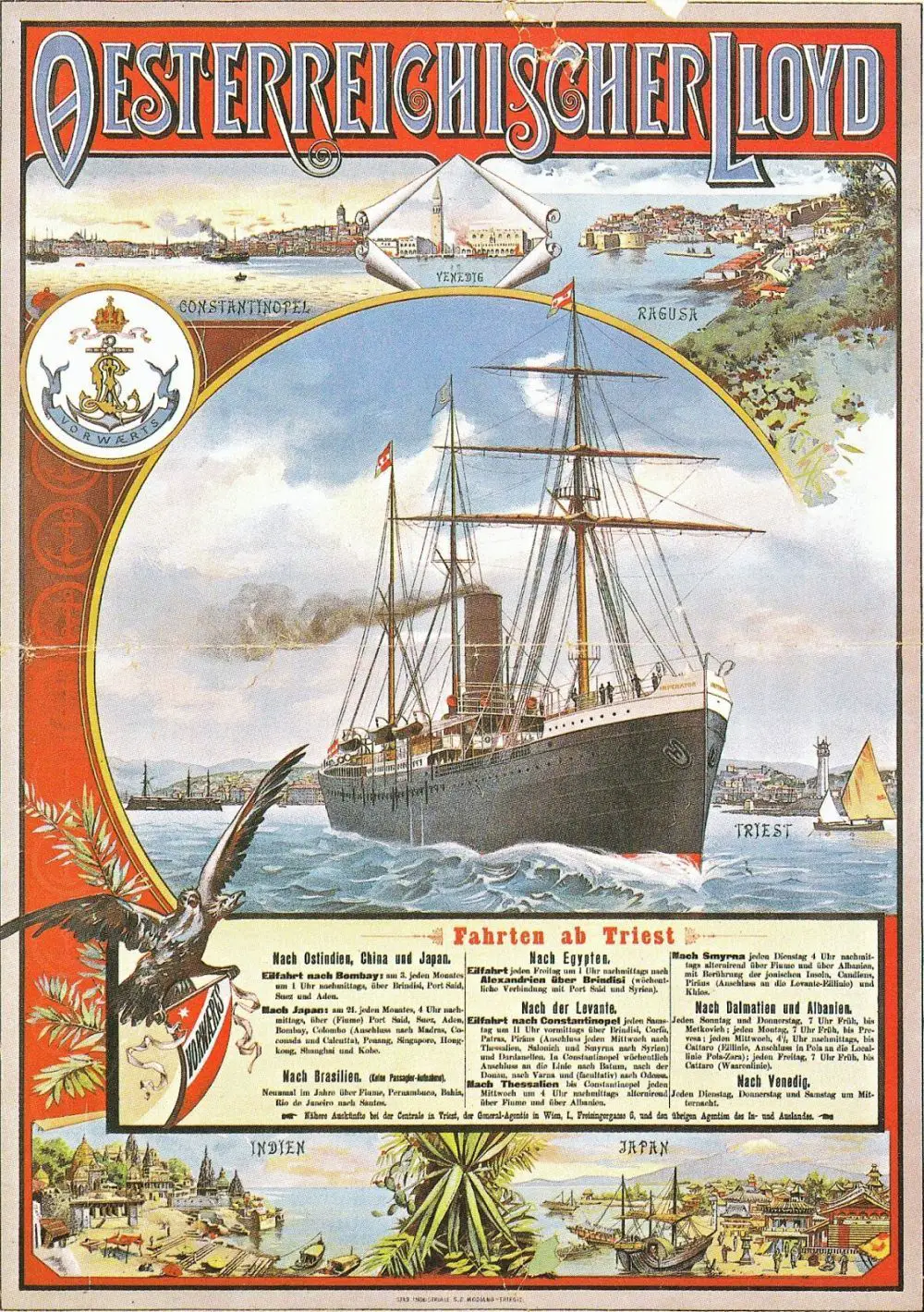
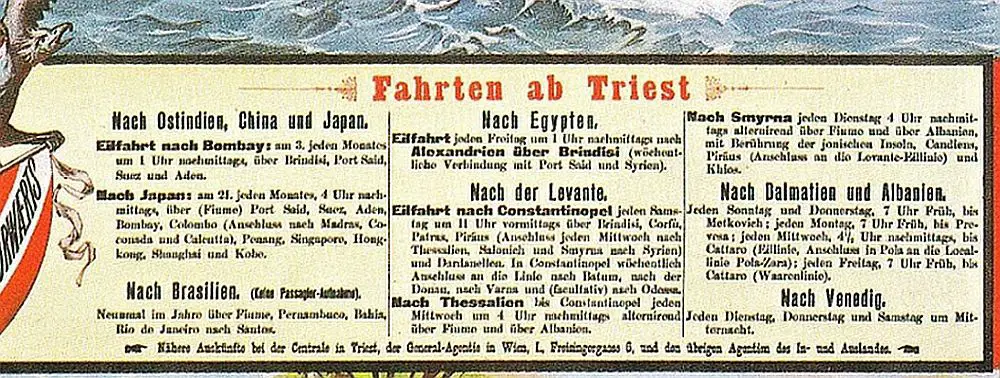
On arrival, however, some people from The Helios, which was carrying 379 passengers almost all from the River Soča valley (Ita: Isonzo), were sent to the city of Machae in the state of Rio de Janeiro instead. Realizing the change of plans, the group protested with the Austrian Consul in Rio, and were eventually repatriated back to Trieste. Even before their return, the Deputy of Trieste, which so far had tolerated but not supported the Morpurgo brothers’ business endeavors, put up a placard with the news of 300 immigrants asking to be repatriated from Brazil. The Austrian police also filed a lawsuit against the brothers while the Coastal Deputyship prohibited emigration agencies from being set up in Trieste in 1889 (Grossutti, p. 31, Fait, p. 14).
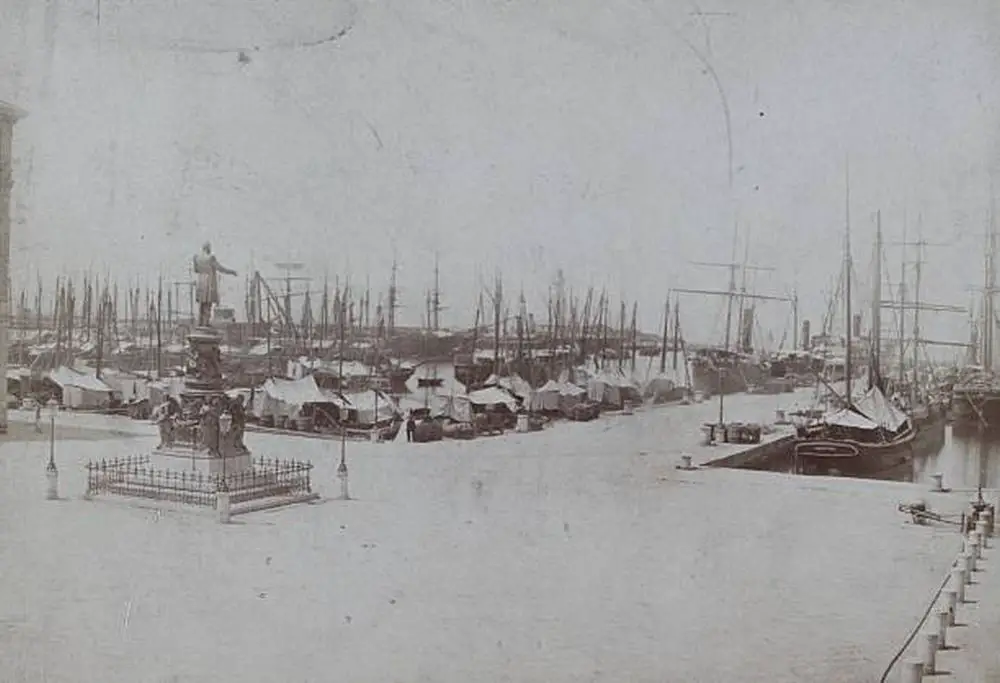
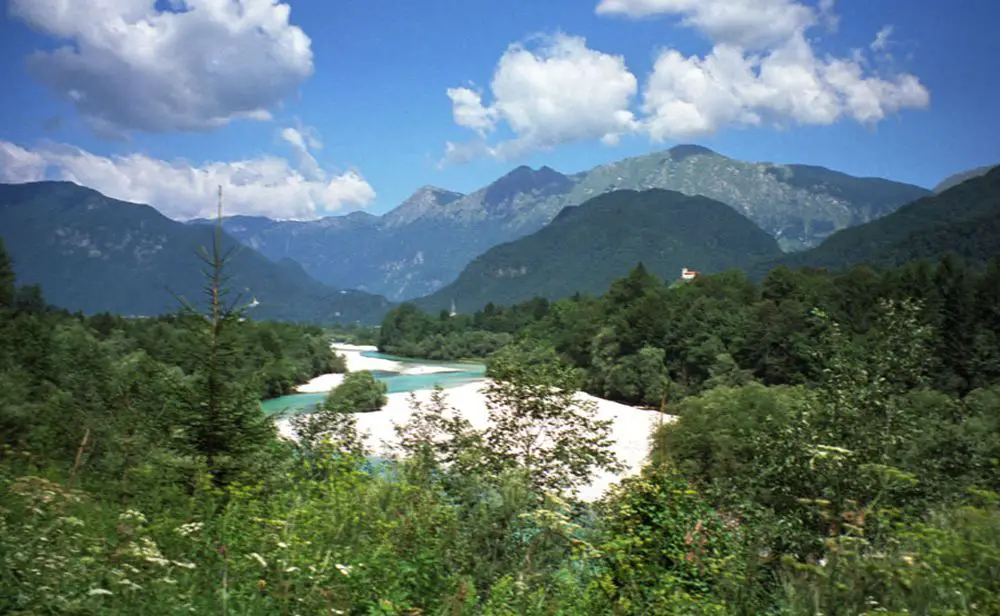
Above: port of Trieste, 1890, Below: River Soča valley at Kobarid with Stol mountain range in the backgound (Photo: Bernd Gehrmann, WIkimedia Commons, CC BY-3.0)
After thwarting the Morpurgos’ business, English Cunard (the company which owned The Carpathia, the famous ship that picked the survivors of The Titanic and operated from the Adriatic from 1904 on) attempted to take its share of passengers from the Port of Trieste in the 1890s. However, the website of the Rijeka Museum notes that German shippers were strong in the only Austrian port, so Cunard eventual turned towards the Hungarian port of Fiume (Rijeka), where the number of the Austrian-Slovene departures appeared to be negligible. In Trieste, however, Cunard did manage to keep a 15% market share of the trans-Atlantic departures from this port. (Ibid.)
Meanwhile Fratelli Cosulich, a shipping company from Lošinj (Cro) moved to Trieste in 1889, and in 1894 Austro-Americana, owned mostly by the German shippers, was founded almost immediately after Cunard started calling at Trieste. Both companies merged into Austria’s major domestic shipping company Unione Austriaca di Navigazione (Austrian Shipping Association), also known as Austro-Americana & Fratelli Cosulich. “The least represented among the Austrians embarking at Trieste”, writes the Rijeka Museum, “were those from the Austrian Littoral, i.e., the Triestine hinterlands, Istria and the Kvarner islands. They often emigrated through western ports.”
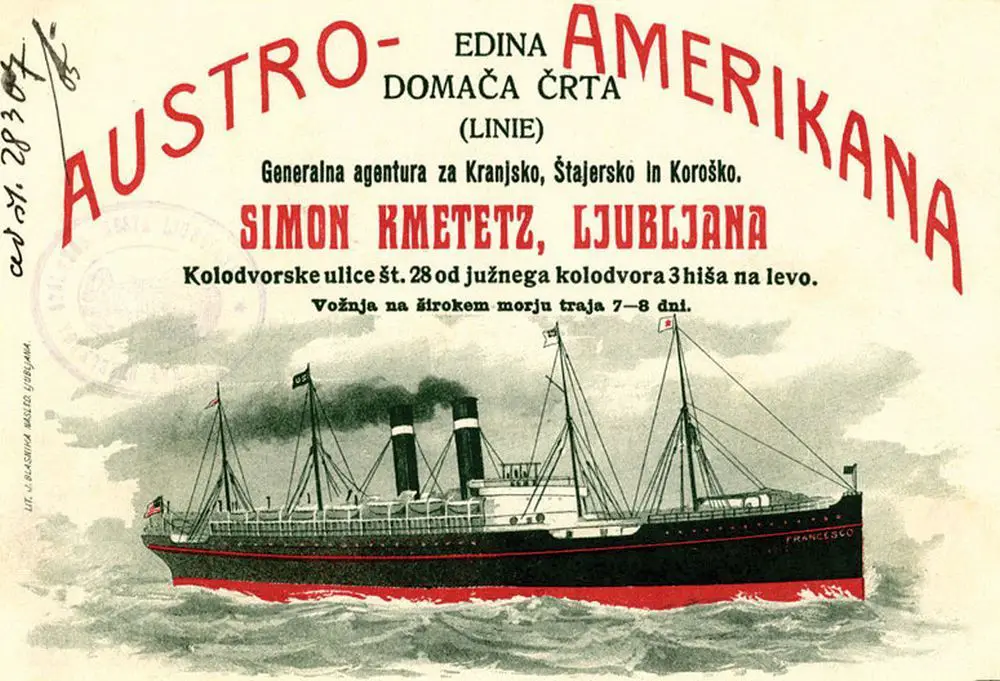
In the first half of the 1890s, emigration to Brazil spread from the Littoral to Carniola (Kranjska). In 1913 Mulaček wrote that
“under the influence of emigration agents’ propaganda, large numbers of people from Postojna municipality left for Brazil. This emigration ceased immediately after the propaganda had stopped. It would be interesting to have a clear picture of emigration according to each county (…) which would show that some municipalities stayed almost intact from the American mania, while others are quite horrifyingly emptied, so to speak, almost without any inhabitants of the peak productive age. Initial numbers from Logatec and especially Postojna counties give evidence to how the emigration agents influence the rise in emigration numbers and how the latter can be curbed, if the authorities approach the matter seriously. Postojna is the only county that exhibits extraordinary high initial numbers. In those days the notorious agent Nodari blustered in Italian Udine (Videm), who lured his victims to Brazil. But as soon as the authorities stopped his activities, the emigration fell to the lowest numbers and slowly leveled with the rest of the country.” (Mulaček, p. 260)
The time Mulaček refers to in his analysis of emigration from the Slovenian parts of Austria starts with the year 1896 in which, as evident from his tables, Postojna county does have the highest number of emigrants, 938, compared to 38 departures in the year that followed.
Furthermore, the name Nodari that Mulaček mentions reappears on many occasions in the warnings published by the Austrian authorities, as well as in the Slovenian newspapers themselves. On November 13, 1897 the newspaper Slovenec, for example, published a story, a report from Kamnik, in which it warned of the “unscrupulous” and “notorious” agent Nodari Silvio from Udine (Videm) who lures Slovenian famers with letters and empty promises of free land to Brazil, where none of it is in fact waiting for them. The article concludes with: “Don’t go to America, especially not to Brazil!”
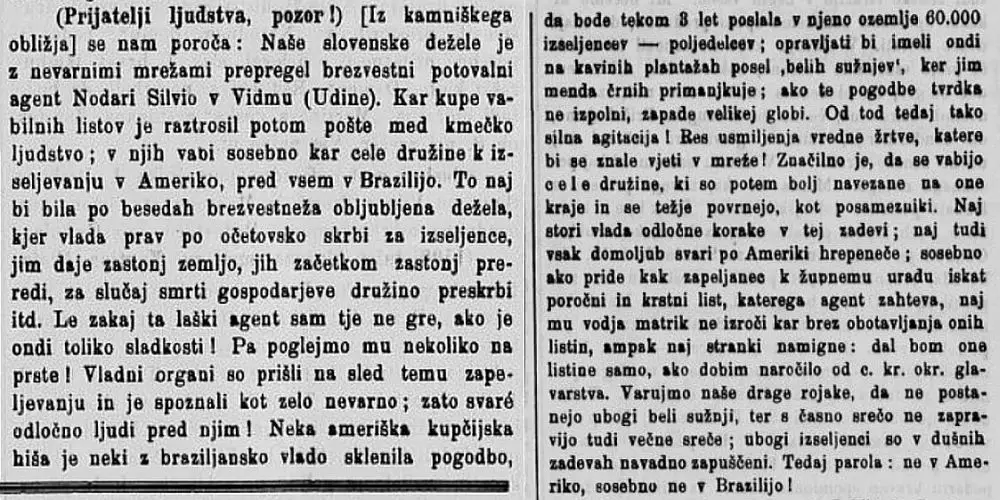
Nodari appears in other sources as well. The Rijeka Museum, for example, also mentions Nodari when it writes that “in many border towns, such as Buchs, Basel and Udine, mostly outside of the territory of Austria-Hungary, the commissioners literally assailed the emigrants in an attempt to sell their service. The Nodari in Udine, across the border from Austria, published its ads in Czech, Hungarian, Polish, Slovenian, Croatian and Russian.”
Nodari also appears in Friedman-Kasaba’s book on 19th Century female emigrants. One of the two chief agencies that promoted emigration from then impoverished and overpopulated eastern Galicia in the years between 1890 and 1892, notes Friedman-Kasaba, was an emigration agency of Silvio Nodari from Udine (Videm): “for a small fee he promised to send them “free” steamship tickets from Genoa to Rio de Janeiro.” (Frieman-Kesaba, p. 201).
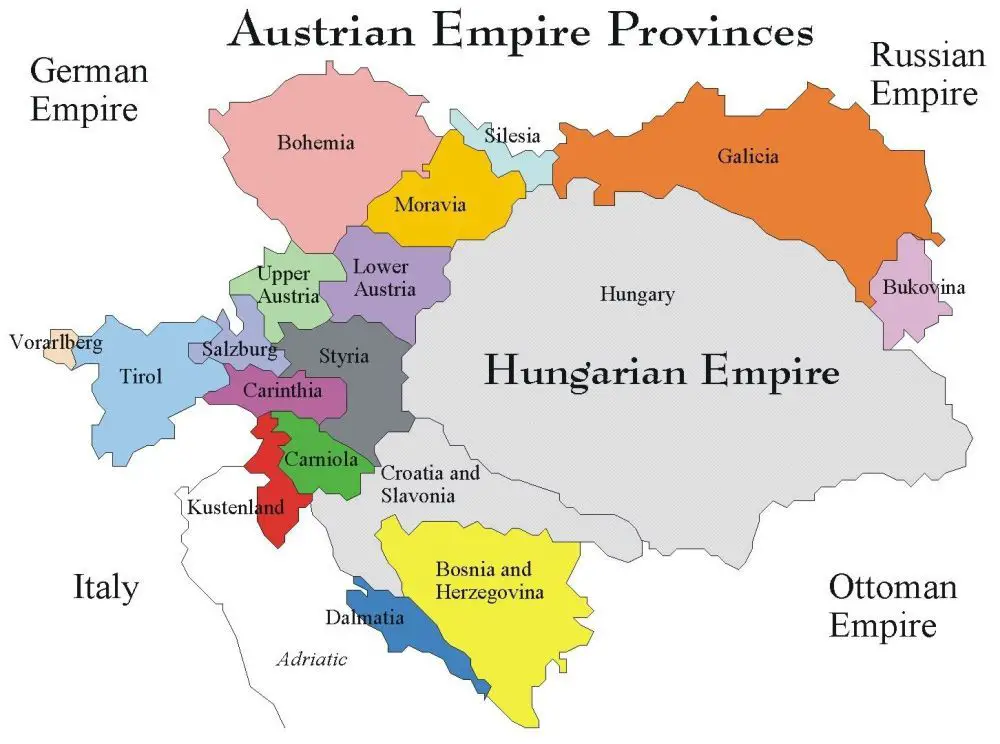
Given that the majority of the Slovenes that emigrated to Brazil mostly originated from the Italian and Austrian littoral and that “those from the Austrian Littoral, i.e., the Triestine hinterlands, Istria and the Kvarner islands often emigrated through western ports” instead of the Trieste, we might as well conclude that the ports of Genoa and Naples played an important role in emigration of the Slovenian immigrants to Brazil as well.
This speculation is somewhat supported by Paul Butel in his book The Atlantic, in which we read that “after 1885, Genoa and Naples were the two ports for transalpine emigration, to the detriment of the continental companies. Around 1900, the Italian companies La Navigazione Generale Italiana, Italia, Veloce and Lloyd Italiana managed to handle slightly less than half of the emigrant departures. (…) The Italians successfully took part in the emigration boom of the 1890s and 1900s. (…) The peak was reached in 1900 to 1907, with 2,575 776 departures. Brazil alone received some 693,000 Italian immigrants from 1887 to 1902.” (Butel, p. 250).
By the turn of the century Ljubljana represented a crossroads of many who were arriving and departing from the eastern and southeastern parts of the Austro-Hungarian monarchy, and had legally or illegally travelled to Trieste, or even more often towards the western ports, for example Bremen, Hamburg, Rotterdam, etc., where they boarded ships that took them to the promised lands, especially the United States of America. The position of the city in the central part of Carniola (Kranjska), and especially its railway hub connecting Vienna with the ports of Trieste and Rijeka, to which the Upper Carniolan (Gorenjska) rail network was connected in 1870, along with the two routes from the Lower Carniola (Dolenjska: from Kočevje and Novo mesto) in 1893 and 1894, respectively, meant that Ljubljana, or rather its train station area (Kolodvorska Street in particular) became a swarm of shipping companies agents, and it was the only city in Carniola that also served as a supervisory station. (Drnovšek, p. 212)
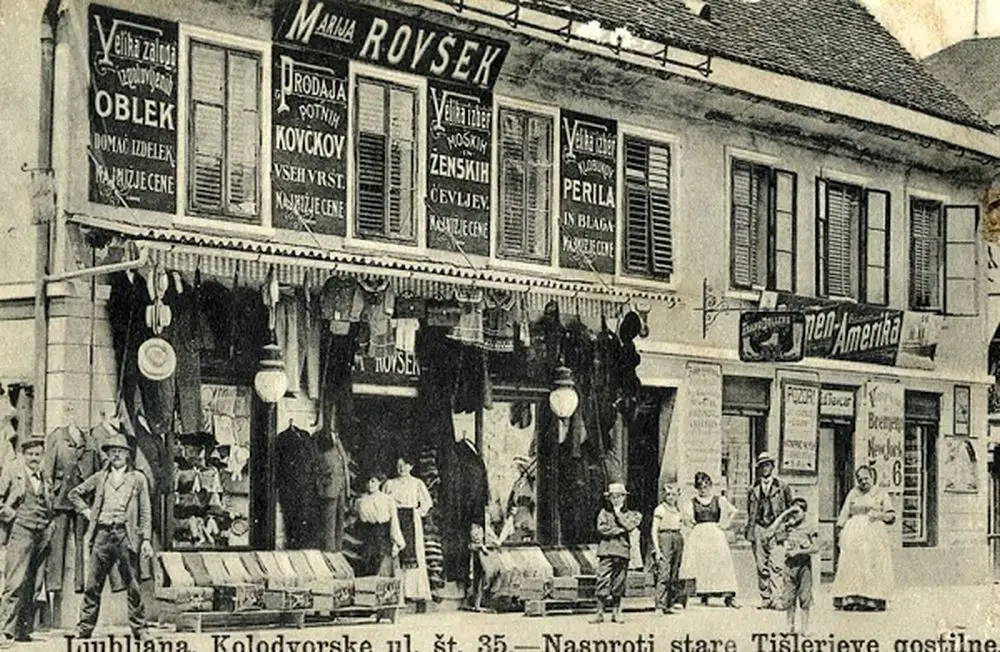
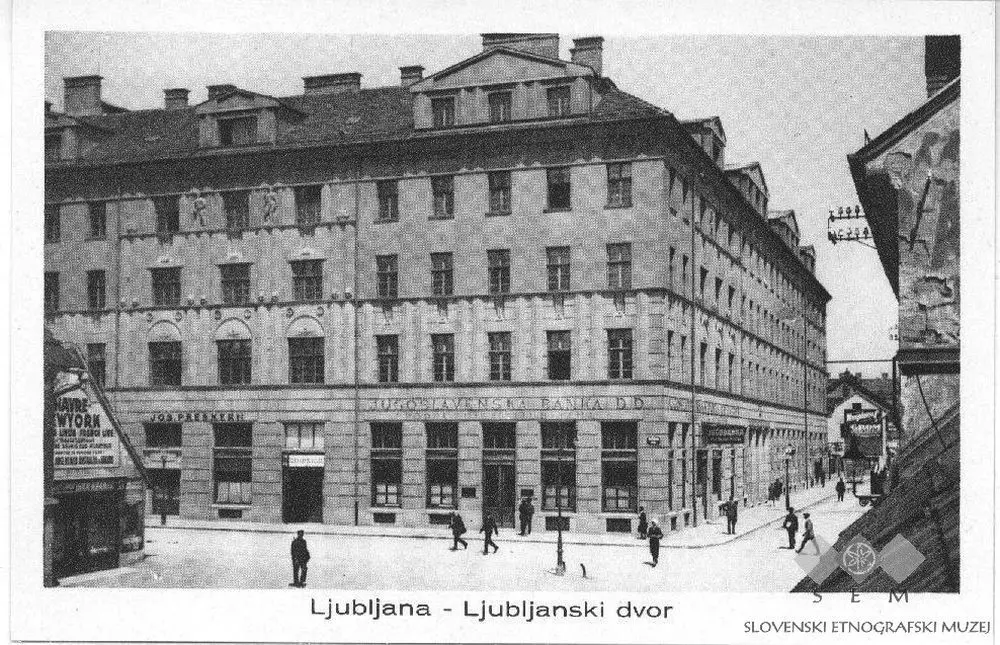
Pay attention to the building on the far left, it's the one in the main picture to this story.
Below is a list of all the agents operating from offices on Kolodvorska Street, as presented by Gašper Hudolin for the a City Library publication titled Ljubljana med nostalgijo in sanjami (Ljubljana between nostalgia and dreams, p. 30):
Edvard Tavčar, Kolodvorska ulica 35 (across the street from the Stari Tišler guesthouse): agent of the Norddeutscher Lloyd (North German Lloyd, Slo: Severnonemški Lloyd). The company’s steamer sailed from Bremen to New York.
Edvard Kristan, Kolodvorska ulica 41: agent of the White Star Line, American Line and Holland America. His customers first had to travel to Rotterdam in order to board a ship for New York.
Ivan Kraker, Kolodvorska ulica 35: agent of the Compagnie Generale Transatlantique. Offered journeys from Le Havre to New York and from Le Havre, Bordeaux and Marseille to Argentina, Canada and Australia.
Simon Kmetec, Kolodvorska ulica 26: agent of the Fratelli Cosulich and Austro-Americana. Their ships sailed from Trieste to New York, Buenos Aires, Rio de Janeiro, Santos and Montevideo. Most emigrants travelled with this company.
Franc Dolenc, Kolodvorska ulica 41: agent of the Red Star Line. Passengers travelled from Antwerp to New York and Philadelphia. Steam ship departures took place on Saturdays, and passengers were advised to purchase their tickets before Tuesday.
Karel Rebek: Red Star Line representative, confirmed by the imperial government. In 1903 he announced that his passengers would receive a health check before their cross-Atlantic departure.
The British Cunard Line had its office at Kolodvorska 26, at the corner by Stari Tišler. Its ships sailed from Cherbourg (Normandy) to New York.
Royal Holland Lloyd (Koninklijke Hollandsche Lloyd) had its office at Kolodvorska ulica 26 as well. Its steamers travelled from Amsterdam and Cherbourg to South America.
Fran Seunig, Kolodvorska ulica 28a: agent for the Hamburg Amerika Line.
As emigration agents only made a slight portion of the money on the ticket sales, and competition was fierce, complaints were sometimes made against them for being pushy with the passengers on the street and frauds were quite common too. Agents travelled across the country and persuaded potential customers why and how to emigrate. They would also send leaflets, letters, maps and postcards from abroad to potential customer’s addresses, and advertised their services in local newspapers (Hudolin p. 29-31)
According to Hudolin’s report, emigrants would gather at Stari Tišler and the agents offices, mostly on Mondays and Tuesdays, and from there leave for trains that took them to their ports of departure. Kolodvorska thus became a very lively street, which caused a lot of complaints by the locals due to noise and harassment, and also a lot of concern by the police, who were responsible for the traffic and general order. Indeed, such problems soon spilled out of the street and caused concern elsewhere, and so a barrier was put in place to try and keep the emigrants and those that sold their services to them in one place. (Hudolin p. 31)
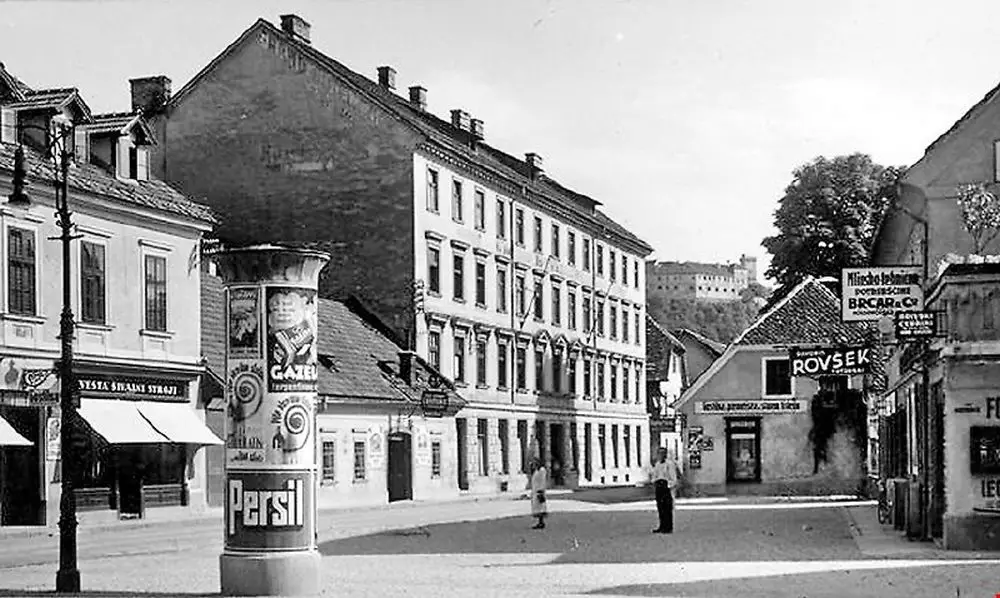
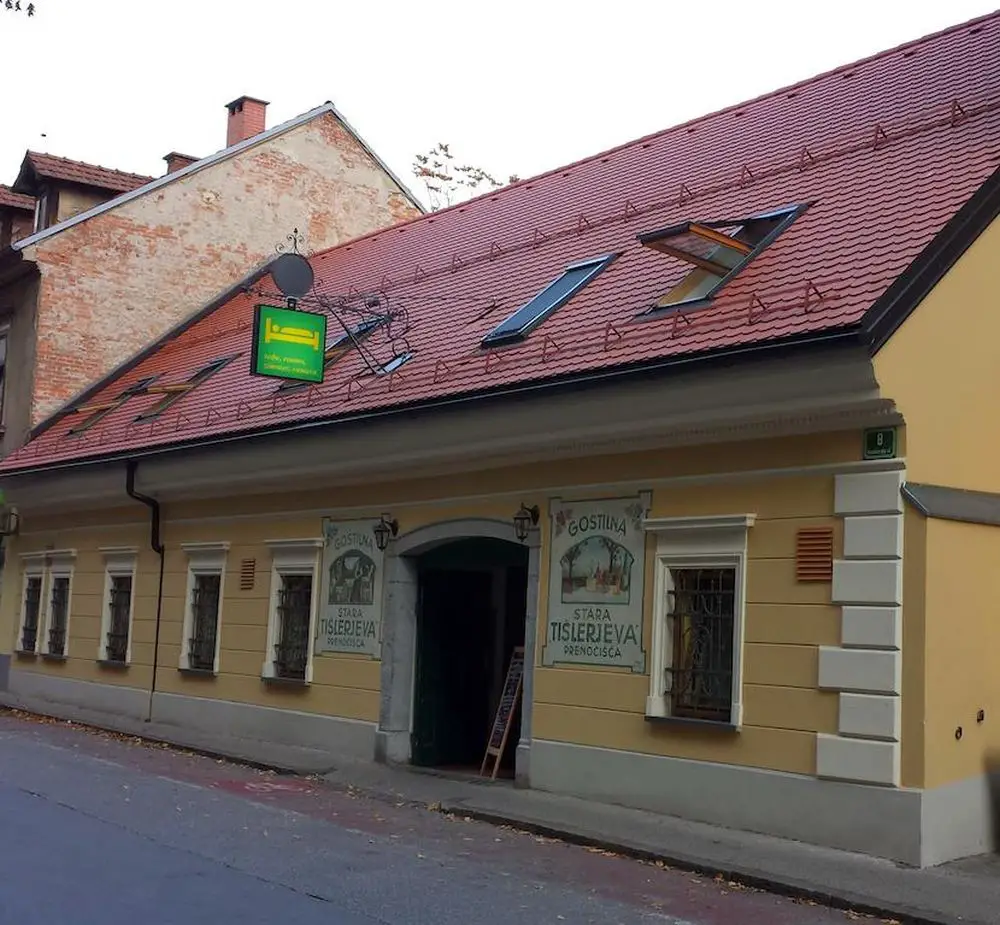
Stari Tišler guesthouse before and today
References:
Butel Paul. 1999. The Atlantic. Link.
Drnovšek Marjan. 1988. Nekatere evidence o izseljevanju v Ameriko pred prvo svetovno vojno. Kronika, časopis za slovensko krajevno zgodovino, pp. 205-217. Link.
Fait Francesco. The Emigrant’s Journey: from sailing ships to the second post-war period with special focus on departures from the port of Trieste. Link.
Friedman-Kasaba Kathie. 1996. Memories of Migration: Gender, Ethnicity and Work in the lives of Jewish and Italian women in New York, 1870 – 1924.Link.
Grossutti P. Javier. Emigration from Friuli Venecia Giulia to Brazil. Link.
Hudolin Gašper. 2014. Kolodvorska ulica. Ljubljana med nostalgijo in sanjami, Revija za domoznanske vsebine, pp. 7-87. Link.
Mulaček Ivan. 1913. Naše izseljevanje v številkah, Čas: revija Leonove družbe, pp.256-267.Link.
Valenčič Vlado. 1990. Izseljevanje Slovencev v tujino do druge svetovne vojne. Dve domovini: Two Homelands. Link.
Rijeka museum
Slovenec (newspaper). Nov. 13, 1897. Prijatelji ljudstva pozor! Link.
Slovenian Embassy in Buenos Aires. Link.
To be continued.

